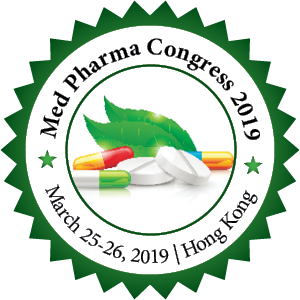
Ashraf H Abadi
German University in Cairo, Egypt
Title: Modulation of the estrogenic/antiestrogenic properties of the anticancer drug Tamoxifen
Biography
Biography: Ashraf H Abadi
Abstract
Tamoxifen is Selective Estrogen Receptor Modulator (SERM) that is widely used as an adjunctive endocrine therapy for the treatment of postmenopausal women with hormone-dependent breast cancer, metastatic breast cancer and reduction of breast cancer incidence in high risk women. Its anticancer effect is attributed to its anti-estrogenic properties. Nevertheless, Tamoxifen has estrogen-like effects in the uterus, this results in a spectrum of abnormalities involving the genital tract, the
most significant being an increased incidence of endometrial cancer and uterine sarcoma. That is why its therapeutic use is limited to 5-10 years duration. This modulation in the functional activity is attributed to the ligand-dependent receptor conformational changes, differential interactions with numerous Co-Activators (CoA) and Co-Repressors (CoR) expressed and recruited in different tissues and subsequent changes in gene transcription. Most of literature linked the anti-estrogenic properties of Tamoxifen to the presence of the substituted aminoethyloxy side chain that introduces a conformational change in helix 12 of the ER-alpha receptors, blocking the co-activator binding. Moreover, in the body Tamoxifen is metabolized to the more potent anti-estrogenic hydroxyltamoxifen and endoxifen that contributed to its anti-cancer effects. In this report, two series of Tamoxifen analogues were designed and synthesized, both of them are with substituted aminoethyloxy side chain but one of them is with oxygenated substituent and the other one is with a chlorine atom on position 4 of ring C. The latter substitution blocks the 4-hydroxylation, preventing the formation of the oxygenated derivative. Interestingly, all the compounds with the oxygenated side chain were found to be anti-estrogenic in the Yeast Estrogen Screening (YES) assays and to be potent anticancer, while all the chlorine derivatives were found to be estrogenic and devoid of the anticancer activity. This indicates that the functional activity of such Tamoxifen analogues is mainly a function of its ability to be hydroxylated on position 4 of ring C. This represents a new concept to explain the SERM properties of Tamoxifen and its analogues. Such intriguing results are supported by literature review showing that the expression of CYP2D6 is higher in breast tissues rather than uterine tissues.

